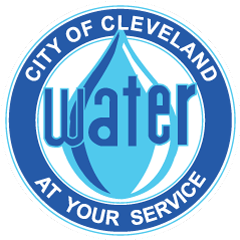What We Do
Cleveland Water customers can be confident that the water delivered to your home is safe. We take several actions to protect you and your family from the risk of lead. Learn what we’ve been doing for more than 20 years to keep your water safe.
Go to:
Treatment
Drinking water is lead-free when it leaves our treatment plants, but it can pick up lead from pipes and plumbing made from lead or with lead parts. One of several actions we take to keep your drinking water safe and protect you and your family from the risk of lead in water is optimizing our water chemistry and treatment process to minimize corrosion of pipes and plumbing.
Orthophosphate Addition
- We add a food-grade chemical called orthophosphate at the end of the water treatment process. It forms a protective coating on the inside of pipes and plumbing that prevents water from coming into direct contact with metal pipes and reduces the likelihood of lead dissolving into the water. We've been adding orthophosphate since 1997.
- If the orthophosphate coating inside a lead service line or lead plumbing is disturbed and flakes off, the coating will reform.
- The amount of orthophosphate added to water for your protection is very small – about 1 milligram per liter. By comparison, one liter of pop contains up to 1,000 times that amount.
pH Control
- We keep the pH of water leaving our treatment plants above 7 to help reduce corrosion. Water that has a pH below 7 (on the pH scale of 0 to 14) is more acidic and therefore more likely to corrode metal.
- The pH of water leaving our treatment plants is always above 7, usually between 7.3 and 7.6. Maintaining water pH in this range reduces corrosiveness and allows orthophosphate to form and maintain a solid coating, preventing lead and other metals from leaching into the water.
Monitoring
In addition to the many water quality tests we perform to ensure your drinking water is safe, we regularly monitor lead levels at homes throughout our service area that have lead in their plumbing. Monitoring ensures that our efforts to reduce potential exposure to lead from drinking water are effective.
Compliance Monitoring
- The Safe Drinking Water Act and Lead and Copper Rule require public water systems to monitor drinking water in homes that have lead service lines or lead in their plumbing. Because of our effective treatment techniques and history of low lead levels, the Ohio EPA has allowed Cleveland Water to monitor on a reduced schedule.
- The levels of lead detected in our drinking water have been below the federal requirement of 15 parts per billion (ppb) since 1997 and below 5 ppb for over a decade.
- Our most recent Lead Compliance Monitoring results were below 3.3 parts ppb and 90% were below 2.3 ppb.
Lead Sampling Sites
The water samples for our Lead and Copper Compliance Monitoring are taken from single-family homes throughout our service area that are known to have lead and meet the Ohio EPA's definition of Tier 1 Sampling Sites. Tier 1 Sampling Sites are defined as single-family homes that contain at least one of the following:
- Copper pipes with high lead solder installed between 1982 and 1989,
- Lead plumbing pipes, or
- City-owned and/or customer-owned lead service line.
We’re always looking to expand the pool of homes used for Lead and Copper Compliance Monitoring. If you think your home meets the Tier 1 requirements, you can request your home to be added to our list of monitoring sites by calling 216-664-2882 or by completing the volunteer form.
Replacement
We take several actions to keep drinking water safe and protect customers from the risk of lead. However, we know that any amount of lead presents a risk, which is why we’re working to remove lead service lines.
- We replace all lead city-owned service lines during water main repair and replacement projects and offer to replace customer-owned service lines for free if they’re disturbed during repairs and main replacements.
- If a customer chooses to remove their lead service line, they should contact us as we’ll remove the city-owned service line at the same time.
- Thanks to $2.5 million in funding from H2Ohio and Ohio EPA, we've been able to remove lead service lines at all licensed childcare facilities in our service area. New childcare facilities interested in this program can email childcare@clevelandwater.com to learn more.
Education
We provide resources to educate customers on how to identify in-home sources of lead and reduce the risk of exposure to lead if present.
- Presentations: If you would like a Cleveland Water staff member to present on the topic of lead in water to your group or organization, please call the Lead Inquiry Line at 216-664-2882.
- Identifying Lead: Use the “Check. Test. Date.” method to know the potential for lead in your home plumbing. If there is no lead in home plumbing, there is no risk of lead exposure through tap water.
- Healthy Water Habits: Use the “Clean. Flush. Consume Cold.” method to learn about actions you can take at home to minimize the risk of lead exposure in water.
Resources
For more information about lead in drinking water, please contact our Lead Inquiry Line at 216-664-2882. You can also visit www.drinktap.org, the US EPA’s website www.epa.gov/lead, or call the National Lead Information Center at 800-424-LEAD.
